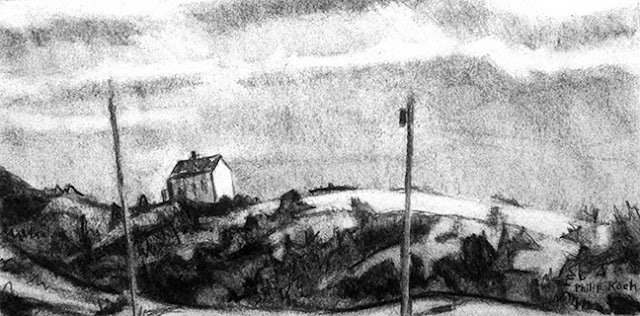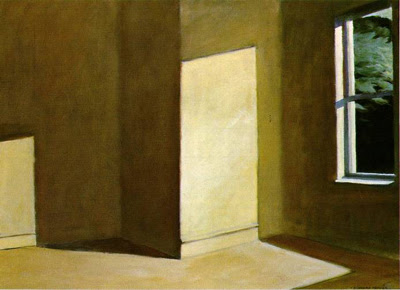A Secret from Vermeer
I know there's something wrong with the image above.
It's a good thing to turn things on their head from time to time- impossible problems in life and in painting sometimes will offer up a solution once looked at this way. My wife the psychotherapist often tells me a big part of what she doing with her patients is just helping them see their problems from another angle. Above is Vermeer's iconic Girl with a Pearl Earring standing on her head for us (artist's models back in the 1600's were much more dedicated than today and were will to pose like this). Here below she's righted herself again for us.
I often turn my paintings upside down to study them with an eye towards improving them. You notice the relationships differently. It's guaranteed you will see something you've not seen before. I want to make a couple of observations about Vermeer's portrait as a companion to the comments I made about the same painting in my previous post.
When he painted this one Vermeer was in touch with the sitter, the space of the room, the light, the textures of skin and fabric, the play of colors. Probably more by intuition than by conscious design, he gradually pushed and pulled his image in a thousand little adjustments until it felt just right. To me this is one of those paintings where everything seems exactly as it has to be. I'd like to talk about just one seemingly small aspect of the painting's composition Vermeer uses to make us feel the this woman's depth of personality.
Especially upside down, the intensity of the white collar is striking. Almost always a move that emphatic is going to find a responding echo somewhere else in the painting. Look carefully at the collar and follow its curve up from the woman's front at the left to where it straightens out to a gradually rising diagonal line about at its middle point. From there on over to where it disappears at the back of her neck it has a more or less straight line trajectory that runs exactly at 90 degrees to the straight far right outer edge of the falling yellow scarf.
This is not an accident. Painters for centuries have placed diagonal lines in their paintings and related them to other diagonals that are positioned exactly at a right angle to their first line. Without realizing what they are seeing, the viewer emotionally senses the connection between the woman's white collar in the middle of sitter and the far right edge of her costume. Vermeer convinces us that this is the only possible head adornment this woman could ever wear.
I believe this is hard wired into our psychology. Perhaps it stems from our need to intuitively grasp for right angle relationships between the flat ground and the vertical axis we make when we stand erect. When you were one year old and struggling to take your first steps unaided, you felt great when you didn't tumble back down to the floor. To stand and walk you had to internalize a mental picture of your body's vertical axis standing at a 90 degree angle to the floor. While out of your conscious awareness, this learned new skill gave you a new power to walk and later to run. It made you feel powerful and safe. What's not to like?
I believe we search out ninety degree angles all the time as we scan a painting. Naturally we see them all over in vertical walls and horizontal table tops- no surprise there. But when this angle is found between two diagonal lines, where one wouldn't be expecting it, it brings a little surge of excitement and feeling of well being. It feels a little like finding you've got an extra twenty stuck in your wallet you'd forgotten about.
Should an aspiring painter start inserting "these diagonal lines at right angles" devices all over their paintings? No. But very often as you are working you will find this relationship hinted at in the forms emerging on their canvas (this goes just as much for abstract work as realist painting). As you become aware of this tendency consider how it could be accentuated to heighten the response in your viewers' eyes.
The woman's collar and scarf probably didn't at first line up the way they did at the end. Vermeer like any painter moved things around, tweaked this and that, worried a lot, and finally arrived at this wonderful painting. My guess is he was both inspired and very stubborn, determined to discover the precise arrangement of his forms needed to deliver the emotional impact he so wanted. That he was so in touch with the expressive potential hidden in his composition is a great gift to us who have come after him.
Vermeer and the woman who sat for him are long gone from us. But then there is this mysterious painting that quietly radiates with its glowing light. In a way it feels almost more real than anything else I encountered today. Vermeer is gone, but something he set in motion with this woman 350 years ago still moves us today. Let's enjoy this painting, but let's also learn some of its secrets.




